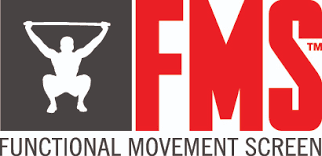What is Plantar Fasciitis?
The plantar fascia is a piece of connective tissue that runs along the bottom of our feet, starting at our heel, connecting to the ball of our foot and running into the toes. Plantar fasciitis is irritation and inflammation of that tissue.
Plantar fascia pain is common at the heel and center of the foot. Pain first thing in the morning is the #1 most reported symptom. Overnight, the fascia contracts and gets tight. When that alarm clock goes off in the morning and you roll out of bed, you feel a sharp pain along the bottom of your foot.
This tightening can also happen when you have been sitting for long periods of time or when you have not been weight-bearing.
Typically, plantar fasciitis pain lessens as you move. After a few minutes of standing the fascia stretches out and the pain will alleviate.
How do you get Plantar Fasciitis?
Plantar fasciitis is typically a repetitive stress injury with no actual trauma to the plantar fascia itself. Rather, the cause is often a muscle or joint imbalance.
These imbalances can occur in the foot as well as in the calf muscle. The plantar fascia is in fact a continuation of the gastroc and soleus calf muscles which run down the lower half of our leg, to the achilles and then flow into the plantar fascia. As a result plantar fasciitis often coincides with tightness in leg muscles.
As is the case with repetitive stress injuries, a lack of adequate time between training sessions for the body to heal the micro damages to muscles and tendons is often to blame.
How we Assess for Plantar Fasciitis at Cardinal Chiropractic
Assessing plantar fasciitis is key in the creation of a treatment plan at our Burlington office. We start by taking a complete history to get a full picture of the pain you are feeling. This is the most important part of determining a diagnosis for plantar fasciitis or any condition. Only then can we recommend the appropriate treatment for plantar fasciitis if your history points to that diagnosis.
The two hallmark indicators for plantar fasciitis lie in where the pain is located and when the pain is most severe.
With plantar fasciitis the pain is most often on the bottom of the foot, around the heel. You may experience the pain as sharp and stabbing, especially when walking or running. For most plantar fasciitis cases the pain is the worst in the morning when you first get out of bed. This is because when we sleep at night or we are off our feet for hours, the plantar fascia shortens into a resting position. When you put weight onto your feet to walk in the morning you are asking the fascia to lengthen too suddenly and that creates the pain in a plantar fasciitis case.
How do we treat Plantar Fasciitis pain?
Dry Needling for Plantar Fasciitis
Plantar fasciitis is common among runners. One effective treatment for this condition is dry needling.
Dry needling helps to reduce muscle spasms and increase the healing process by opening blood flow to the area. As an added bonus, dry needling is also effective at reducing pain.
Since the calf muscles are involved in plantar fasciitis, we start by dry needling the gastrocnemius and the soleus muscles in the calves. Then we move to the Achilles, as well as the bottom of the foot. Dry needling in the bottom of the foot can be tender, so we use Ethyl Chloride to cool and almost numb the area so the needle does not feel tender.
Chiropractic Care for Plantar Fasciitis
Treating plantar fasciitis with chiropractic care usually involves the manipulation of the ankle joint. To reiterate, the pain felt during a case of plantar fasciitis is a sharp pain on the bottom of the heel that is usually worst in the morning. It results from micro tears in the plantar fascia caused by tight calf muscles.
Sometimes tight calf muscles are the result of joint restrictions or joint blockages. These typically occur in the ankle but can also occur in the knee. To determine if a joint is blocked and needs an adjustment, we assess the motion each joint can perform.
When a joint is not moving in the most optimal way, it forces the muscles surrounding the joint to contract in a slightly different pattern. This causes extra stress within the fascia and tendons. We can adjust the affected joints to remove any blockages that we find and improve your case of plantar fasciitis.
Home Exercises for Plantar Fasciitis
Remember that one of the main causes of this condition is tightness in the calf muscle. This is the beefy muscle that sits right on the back of the lower portion of the leg. Tightness in the calf will cause tightness all the way to the bottom of the foot which is where that plantar fascia sits.
There are several exercises that can help decrease muscle spasms in the calf that lead to plantar fascia pain.
- Posterior chain stretch
- Lacrosse ball/frozen water bottle foot roll
- Heel lifts
*Check out our video on how to perform these exercises and the reps and sets we recommend for these exercises.


